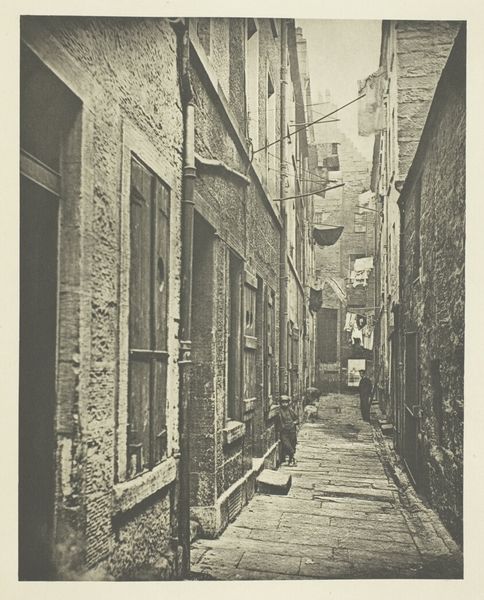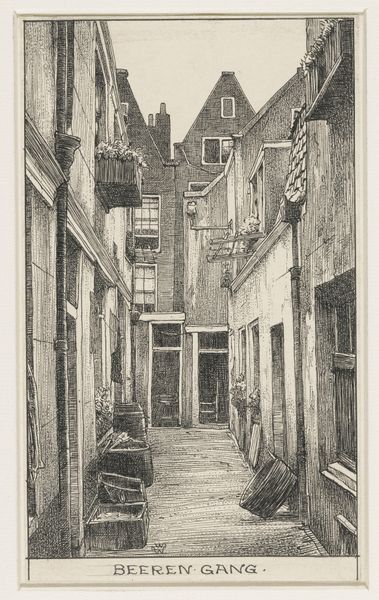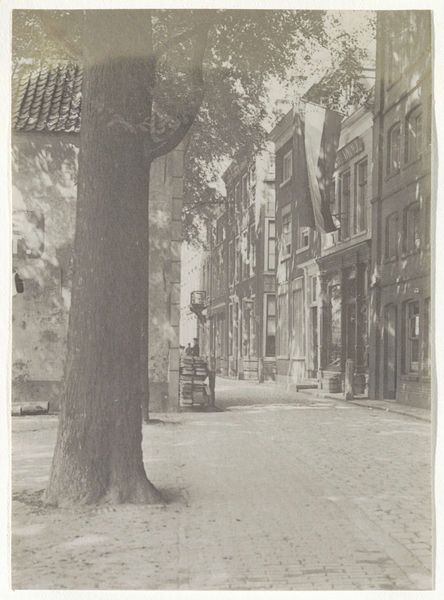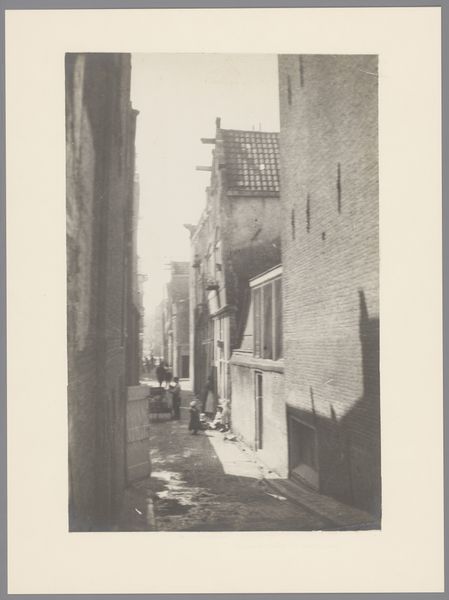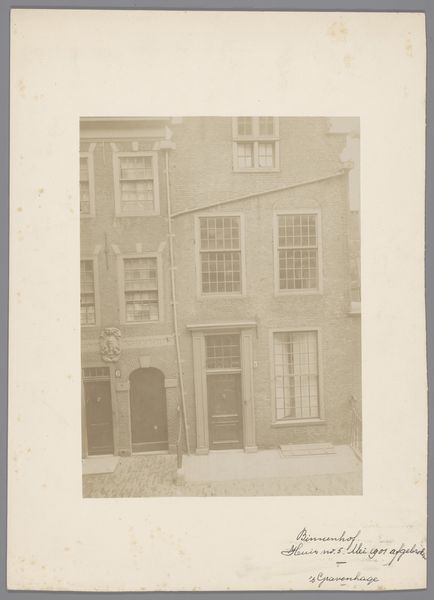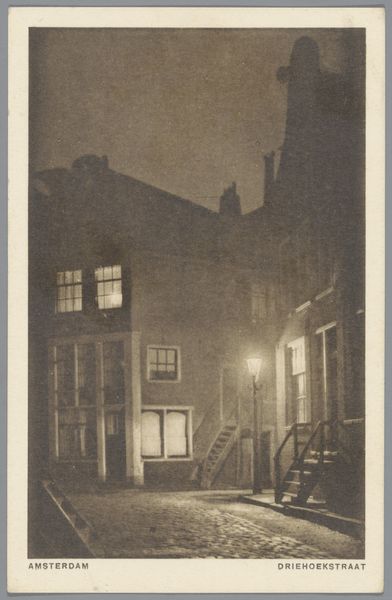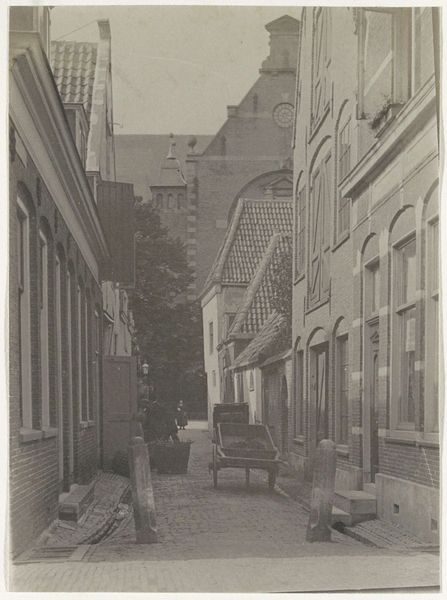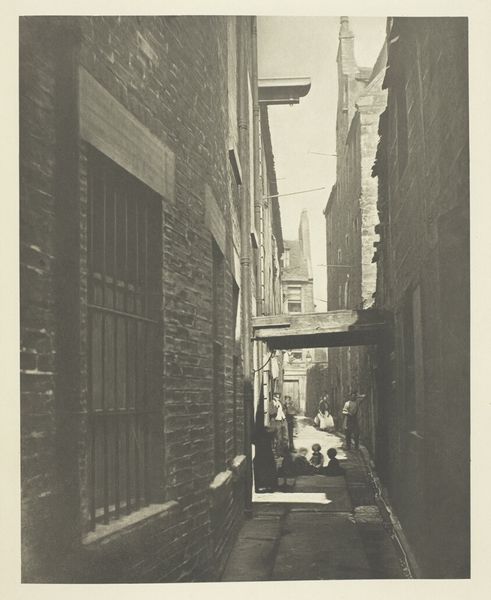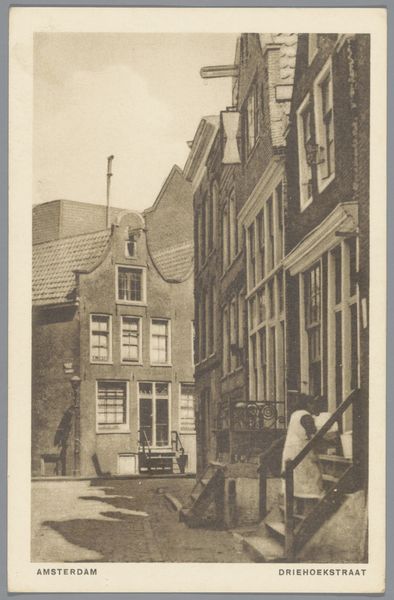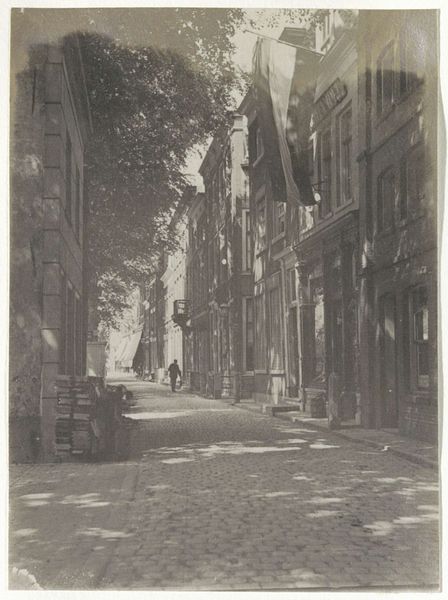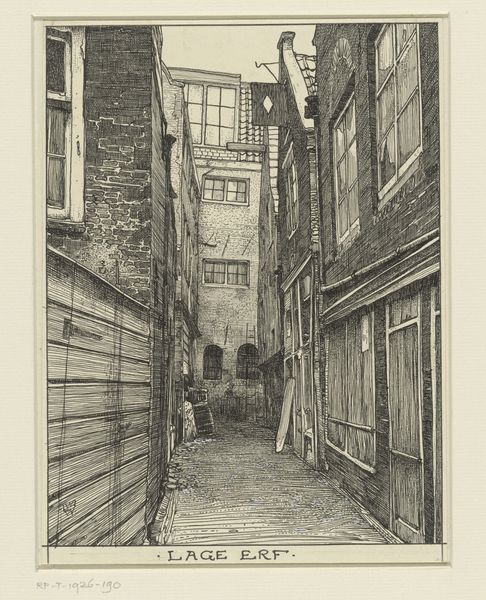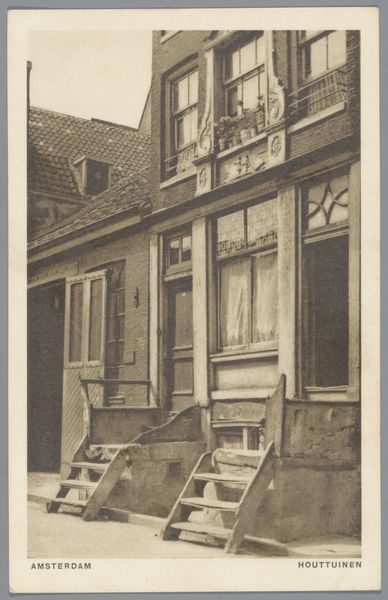
Dimensions: height 140 mm, width 90 mm
Copyright: Rijks Museum: Open Domain
Curator: Looking at this image, the buildings seem almost to lean into the street. What does it evoke in you? Editor: Mystery, maybe? Like a stage set for a Dutch noir film. And those stoops – rickety, like missing teeth on a comb – make you wonder what stories they could tell. Curator: This gelatin silver print, possibly dating from between 1875 and 1930, offers us a view of Amsterdam's Palmstraat. It’s a composition rich with history, raising questions about urban development, class, and daily life at that time. It highlights the architecture, reflecting the social hierarchies embedded in urban planning. Editor: It's the ordinary that gets me. Laundry lines, shadows lengthening. Somebody lived there. Somebody struggled up those steps every day. It humanizes history. I wonder what they were thinking? Curator: Exactly. Analyzing images like this allows us to confront questions of whose stories are typically told and whose are omitted from dominant narratives of urban history. How do the stark architectural details reinforce ideas about visibility, or perhaps invisibility, of certain communities? Editor: Hmm. Well, it also makes me wonder, as an artist, about the person behind the lens. They were creating, even documenting, an everyday landscape into something poetic and almost isolating, weren't they? I mean, did they just happen upon the scene? Did they come back time and time again to take just the right photograph? Curator: And let’s consider the print itself as a physical artifact. Photography like this moved beyond simple visual representation—it participated in defining ideas about national identity. We must ask how it supported, or possibly subverted, social power relations in the Netherlands during this period. Editor: For me, it just sings. It pulls you in, the more you look the more you get a real, maybe true, vision. Maybe the "Amsterdam. Palmstraat" in that regard creates its own singular nation, not one we think of traditionally. Curator: I agree. What an important, multilayered image to contemplate and understand through various frames of reference. Editor: Right? Here's to the stories behind old city streets!
Comments
No comments
Be the first to comment and join the conversation on the ultimate creative platform.
